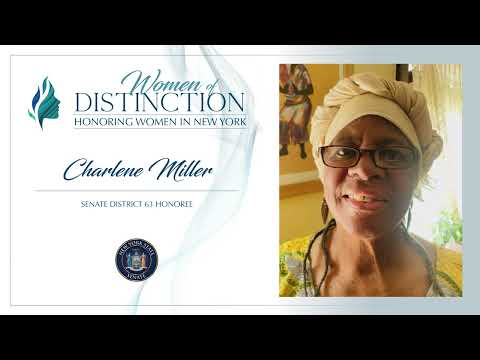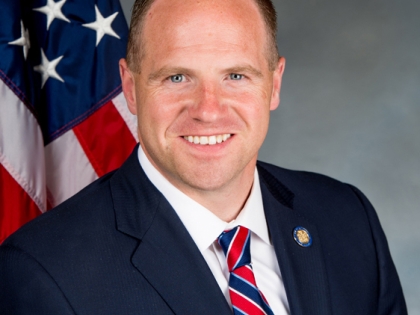
With Pete Buttigieg Poised for United States Transportation Secretary Confirmation Hearing Thursday, NYS Senate Transportation Committee Chair & State Senator Tim Kennedy Pens Letter Underscoring New York’s Top Priorities
January 21, 2021
-
ISSUE:
- Local roads bridges transportation
- Infrastructure and Capital Investment
- MTA (Metropolitan Transportation Authority)
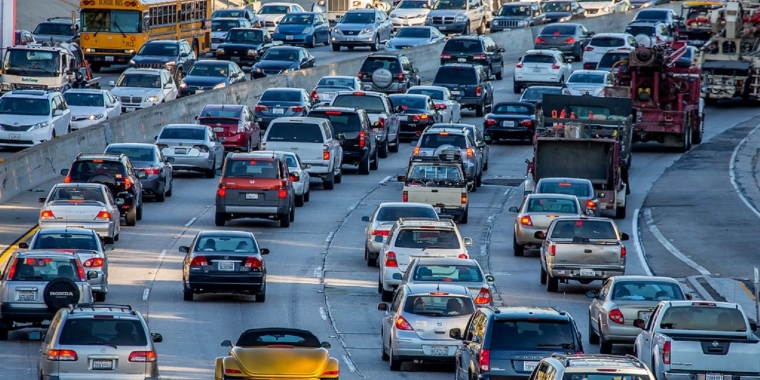
ALBANY, N.Y. – New York State Senator Tim Kennedy (D-Buffalo), Chair of the New York State Senate’s Transportation Committee, has reached out to US Transportation Secretary nominee Pete Buttigieg, urging the former South Bend mayor and presidential candidate to prioritize key transportation and infrastructure initiatives in New York as he assumes his new position in the Biden administration. Buttigieg is set to be questioned by the Senate Committee on Commerce, Science, and Transportation Thursday. In a new letter to Buttigieg, Kennedy notes that New York hasn’t received a Better Utilizing Investments to Leverage Development, or BUILD, grant, in at least three years, which are instrumental in moving comprehensive infrastructure projects forward. Kennedy underscores the need for immediate federal investment in order to reconnect communities through projects such as the reimagining of the City of Buffalo’s Routes 33 or 198, the renovation of Syracuse’s I-81, or the redesign of Rochester’s Inner Loop. Additionally, Kennedy asks for Buttigieg’s partnership in addressing the negative environmental impacts within the transportation sector, expanding and investing in struggling transit networks, and identifying the next step in a plan to implement congestion pricing.
“As our nation continues to reel from the impact of the COVID-19 pandemic, it’s imperative that we’re forging strong partnerships on all levels of government, so that we, as a unified country and state, can address not only the health crisis before us, but the road towards a strong economic recovery,” said Senator Tim Kennedy. “The Trump administration severely neglected New York’s needs, and I have full faith that the Biden administration will proactively work to correct those injustices. By prioritizing investment in our state and nation’s infrastructure now, we’re investing in the return of a robust economy and workforce long-term. I look forward to working with Transportation Secretary Buttigieg to advance New York’s most pressing transportation needs, and ensuring we see our fair share of federal funding, especially during this fiscally challenging time.”
Kennedy also urged Buttigieg to reassess federal investment in New York’s local roads, citing their constant need for maintenance and decreasing financial resources due to population loss in Upstate cities. According to a report released in 2020 by TRIP, a Washington, DC based national transportation research nonprofit, nearly half of major locally and state-maintained roads are in poor or mediocre condition, and ten percent of locally and state-maintained bridges (20 feet or more in length) are rated poor/structurally deficient. Kennedy notes that by placing an emphasis on local infrastructure, the federal government will in turn be reenergizing a struggling COVID economy and bringing jobs back to a population desperate to reenter the workforce.
Since taking over as Chair of the Senate Committee on Transportation, Kennedy has successfully fought to secure a record $100 million investment in the NFTA’s Metro Rail system, overhauled the state’s limo safety regulations, passed the approval of congestion pricing in lower Manhattan, and sponsored the Drivers License Suspension Reform Act, which will restore driving privileges to thousands of drivers who unfairly had their license suspended solely for inability to pay a fine. He also secured the largest year-over-year increase in operating assistance for Upstate transit authorities, and helped to address the overuse of road salt in the Adirondacks.
A full copy of the letter can be found here:
Dear Secretary-designate Buttigieg:
Congratulations on your appointment by President Joseph R. Biden to become the next Secretary of Transportation. Since 2019, I have been the Chair of the New York State Senate Committee on Transportation, and my district includes the City of Buffalo, the City of Lackawanna, and the Town of Cheektowaga. These areas share many of the same challenges that South Bend has experienced. As someone who shares the President’s visionary approach to infrastructure projects around the nation, I wanted to take the opportunity to reach out and respectfully request a meeting with the Department of Transportation upon your confirmation in order to share more details of the most pressing needs here in New York that you and the Department of Transportation can assist with. Below you will find some of the most important issues facing New York State’s transportation sector, many of which mirror the needs of states across the nation. I look forward to a productive partnership with you moving forward.
BUILD Grants
New York, like most states, is reliant on federal funds for a significant portion of its infrastructure needs, especially for larger projects, where the federal share of cost is often 80% or greater. A large funding source from USDOT for projects within states are Better Utilizing Investments to Leverage Development, or BUILD grants, which is the successor to what were previously TIGER grants. Despite having the third highest gross state product in the nation, and being the fourth most populous state, New York hasn’t received a BUILD grant since 2018, with Upstate New York not receiving a BUILD grant since 2017. In the past, BUILD grants, and the predecessor TIGER grants, have been used in the state to help complete projects, including several phases of Buffalo’s Cars on Main Street initiative, improvements to the Port of Albany, rehabilitation of part of the Brooklyn Bridge, and upgrading transit and pedestrian facilities along the I-287 corridor in the Hudson Valley. Similar projects are ready to go, yet without funding commitments to the state, these projects will likely not go forward.
Correcting Historical Injustices
New York is primed to use funding immediately, with many major projects in various states of development, that could benefit from either BUILD grants, or overall federal funding. Major projects provide not only important, generational changes to New York’s communities, but also provide the largest amount of jobs and economic activity. In Western New York, removing the Skyway, an elevated highway directly on the shores of Lake Erie that separates the community from its waterfront, remains a top priority and the Governor is ready to remove it once Federal EIS approval occurs, replacing it with an at grade boulevard and new connector that, in addition to motor vehicle traffic, will accommodate new pedestrian and bicyclist paths.
Route 33, also known as the Kensington Expressway, is a partially below-grade expressway designed and built in the 1950s and 1960s to move people from the suburbs to downtown quicker. This new highway, however, both replaced the historic Humboldt Park, designed by Frederick Law Olmsted, bisected a thriving African American community and led to economic and environmental injustice. In essence, a unifying and unique linear park was replaced by a multilane trench highway. NYSDOT has studied options for covering portions of Route 33 and reconnecting the community, but cost remains an issue.
Route 198, or the Scajaquada Expressway, was built in the mid 1950s as an East-West connector, yet was partially placed in another Olmsted-designed park, Delaware Park, interrupting his vision and design. Placing cars next to a park presented challenges, and in 2015 a car jumped a barrier and crashed into the park, killing a three year old boy and injuring his five year old sister. In response, NYSDOT decreased the speed limit from 50 mph to 30 mph, but a safer redesign and reimagining of the roadway is badly needed and in process. Federal funds are vital to make it a reality.
In other regions of Upstate New York, Syracuse is looking to renovate I-81, an elevated highway that cuts through the city, separating communities. When first built, low income individuals were displaced from their homes to accommodate the construction. Streets that once connected neighborhoods were cut off by the roadway. NYSDOT has endorsed the idea to remove the elevated portion of the highway, and create a boulevard that allows traffic to flow while reconnecting neighborhoods. In Rochester, work continues on reconnecting communities by covering the Inner Loop Expressway, a project with initial phases funded through a TIGER grant, with great early results. Additional funds may be needed to continue this project to its full completion.
I was heartened by your stated commitment to finding ways to reverse past injustices in the design and construction of highways, a reality that is often overlooked by decision-makers. In fact, three of the projects previously listed, Route 33, I-81, and the Inner Loop in Rochester, are attempts at reconnecting communities by removing or redesigning the roadways that cut through neighborhoods, specifically low income communities, leaving a scar upon the urban landscape.
I believe it would be beneficial for these, and many similar projects, if states and localities could access Federal funds for removing roads and replacing them with parks and community driven development, instead of the current policy of only using federal funds if there is a stated transportation purpose. As we look to reverse past injustices by removing highways that cut through communities of color, federal matching funds are not eligible if the end result does not serve a transportation purpose. This means reconnecting a community and bringing new life to a neighborhood by covering a highway with a new walkway and park is not eligible for federal funds. This leaves it entirely up to a state and local government to come up with the funds necessary to completely remove a highway. It is critically important that the Biden administration and USDOT, under your leadership, loosens these unfair regulations and broadens the scope of how federal transportation funds can be used by the states.
NYC Metro Area Highway Needs
Further downstate, both the Route 17 and Brooklyn-Queens Expressway (BQE) projects are regionally important projects that have a critical need. I have personally toured both locations, and have seen firsthand the bottleneck and inefficiency the current roadway designs possess. Route 17 in Orange and Sullivan Counties must have a third lane added in both directions, as recommended in a 2013 capacity study funded by Majority Leader Charles Schumer. The area has seen economic growth, with an expanding outlet mall, the opening of a Legoland theme park, and residents moving from New York City, resulting in increased traffic and delays, and corresponding increase in air pollution where traffic stalls. A similar situation exists on the BQE, where daily traffic counts often result in traffic jams and congestion. However, the BQE is plagued with the need for significant repairs and replacements in order to preserve the only interstate highway in Brooklyn and maintain its status as a safe and efficient regional connector. The 1.5 mile stretch of roadway that needs the most work dates to the 1940s and 1950s, and due to constant traffic, much of this roadway has seen minimal repair and upkeep since then. With repair costs for the BQE estimated to be at least $3.6 billion, federal funds will be necessary to help keep this vital artery operating well into the future.
Local Roads
Local roads, or those roads operated and maintained by municipalities and counties, that have the highest percentage of daily use by everyday New Yorkers, and that often see the wear and tear quicker than state highways are also a major issue. As a former Mayor of a Rust Belt City, I know you understand the damage our roads experience, not just from heavy use, but also from the regular swings in temperatures and precipitation, which is only getting more extreme with climate change. Any assistance the federal government can provide to have funds dedicated to municipal and county road repair would be very welcome. Additionally, I have been emphasizing funding for the aging urban roadways of small to medium sized cities, who have a great need but often have less of a tax base from which to draw money for these projects. Many of these cities, especially outside of New York City, have seen population loss to the suburbs or to other states, leaving the same mileage of roadways for these cities to maintain, but with fewer resources to do so. Prioritizing roadways in small to mid-sized cities will not only improve our existing infrastructure, it will also put New Yorkers to work and attract new development to these urban cores.
Amtrak, Light Rail, and Subway Needs
In terms of rail and transit, New York has arguably the biggest needs among any state in the nation. In the New York metro area, Amtrak, a subsidiary of the federal government, is working with the MTA on two tunnel projects that are critically important to the future of transit: the Gateway Access construction and the repair of the East Side Tunnels. The Gateway tunnel, a $13 billion project to add new rail lines under the Hudson River, is the centerpiece of a capital program to improve the rail network across the entire Northeast, has been stalled while waiting for guidance and approval from the federal government. Completing the tunnel is vital to improving the efficiency and on time performance of both New Jersey Transit and Metro-North riders west of the Hudson, and ultimately will help Metro-North trains west of the Hudson finally achieve a single seat ride into New York City.
On the other side of Manhattan, the East River tunnels are owned and operated by Amtrak, yet are important as a link for Long Island Rail Road trains to connect into Penn Station. These tunnels were damaged by Superstorm Sandy, and Amtrak has previously stated repairs to these tunnels may not commence until 2025. Further, when work does start, Amtrak has scheduled to take each of the two damaged tunnels out of service for two years, leading to possible delays and frustration for LIRR riders. However, recent evidence has shown it may be able to repair the tunnels while keeping the tunnels in operation, and I urge you to prioritize repairs that have minimal disruption on service.
In Manhattan, expanding the Second Avenue subway remains an important component in the revitalization of the MTA and NYC subways. Phase One in creating a subway line on Second Avenue was completed in 2017, running from 59th to 96th streets. The opening of the initial phase has helped alleviate ridership on other lines, and helped invigorate communities by connecting them to the rest of the existing system. Expanding the line to 125th Street in Harlem has been proposed from the start of this project, and has been included as part of the MTA’s current $51 billion Capital Plan. However, funding for this project is unclear, and federal assistance will be necessary to get the project completed. Harlem and parts of Northern Manhattan have seen an economic renaissance in the past few decades, and bringing another subway line into the neighborhood would only create more economic opportunity for its residents.
In Buffalo, the Niagara Frontier Transit Authority (NFTA) is planning to expand its light rail system north into the Town of Amherst and the main campus of the University at Buffalo, the largest university in the SUNY system. This project is currently in a planning stage, and will add seven miles of light rail track to the system. When completed, this project would not only connect the university’s North, South, and Downtown campuses, but would also connect downtown Buffalo to Amherst, one of the fastest growing towns in Erie County, and the location of much of the region’s new job creation. Simply put, building this extension is paramount for the continued economic success of Western New York. With an estimated cost of at least $1.2 billion, the NFTA will be looking for the federal government to contribute at least half of the cost, and I implore the USDOT to prioritize this project.
Outside of major projects for transit systems throughout the state, New York is uniquely positioned to implement High Speed Rail. New York contains one of the top ten most traveled Amtrak Routes, from Albany to NYC, and further connects from Albany to cities West, including Utica, Syracuse, Rochester and Buffalo, traveling along much of the old path of the Erie Canal, and from Buffalo it further connects to Chicago or into Canada. Increasing passenger rail represents a unique economic opportunity, since Upstate cities are often positioned 50-75 miles away from each other, and inter-connecting these centers of economic opportunity with faster commuting and travel options will increase the economic output of the State overall. But first, we have to make it so that traveling by train is as fast, if not faster, than driving, and at present this is not the case. New York has studied the feasibility of high speed rail before, and I’m advocating at the state level for the most recent study to be updated, but at a minimum our state should receive serious consideration for any funds available for high speed rail improvements.
MTA and Congestion Pricing
The MTA, the operator of New York City’s subway, bus, and commuter railways, was in a dire condition even before the pandemic. Delayed and deferred maintenance had, over the years, resulted in a system plagued with delays, cancellation, and vast frustration by its riders. As a solution, the Legislature and Governor agreed to an unprecedented $51 billion Capital Plan, prioritizing signal, track, and tunnel improvements as a means to increase system reliability and attract riders back to the system, while still spending money on station accessibility upgrades, new equipment, and new infrastructure. A key component to fully funding this plan is the implementation of Congestion Pricing, a unique solution to lower Manhattan’s traffic problems. In 2019, New York was the first state in the nation to approve congestion pricing for areas of Manhattan south of 60th Street. The concept is to charge a toll on most vehicles entering into the tolling zone, using that revenue to fund the MTA Capital Plan while disincentivizing drivers from entering parts of Manhattan that are among the most congested areas of the city. Estimates are that up to $1 billion in tolling revenue annually will be collected, which, when bonded out, would add $15 billion for the Capital Plan.
However, approval for congestion pricing by the federal government requires an environmental review, and two different reviews are possible. In 2019, the MTA gave a timeline to USDOT for each environmental option, and asked for guidance on which type of review was necessary, expecting an answer by August of 2019. No answer was given by then. In fact, to this day the MTA still hasn’t received the guidance it requires. Simply informing the MTA of the type of environmental review it must perform will help get this project back on track, eventually contributing badly-needed funds to capital improvements. Without a congestion pricing system operational in the next few years, the MTA will be unable to fully finance its current capital plan, which may result in delaying projects that are important to increasing the reliability of the system. We cannot wait any longer.
Outside of capital, the MTA also has great needs on the operating side. At one point during the pandemic, ridership was down 90% on some services offered, meaning a drastic decrease in farebox recovery. Prior to the approval of the latest stimulus this winter, the MTA was proposing devastating service cuts and layoffs of thousands of workers, just to balance its books for this fiscal year. The $4 billion in aid already received will likely keep service and job levels largely stable through the end of 2021. Yet the agency still projects a $16 billion deficit on the operating side through 2024, even with a scheduled fare increase that is unpopular by most of ridership. President Biden has proposed $20 billion in funds for mass transit in his stimulus, and a large portion of that must come to the MTA and transit agencies around the state, to shore up their finances and deter additional harmful cuts to service and jobs. Further, as a main economic engine for the entire country, the MTA should also start receiving dedicated operating aid assistance from the federal government each year. As of today, only the DC Metro receives federal operating assistance, which is logical considering it's the seat of government. In my view, the seat of economic and financial activity for the nation should also receive some form of dedicated revenue as well.
Upstate and Suburban Transit Authorities
Outside of the MTA region, transit is hurting in other areas of the state as well. The NFTA has reduced or cut service levels in Western New York, leaving many residents wondering how they’ll get to work and school. CENTRO in Syracuse had previously cut routes. The Rochester Transit System (RTS) has reduced service levels. Similar stories exist throughout the state, and oftentimes it’s the non-MTA systems that are most vital, since they service smaller cities, towns, and rural areas that are less dense, and therefore residents are more reliant on public transit since walking is often not an option. Yet these transit agencies are financially affected by lower ridership and tax collection as the MTA, and while the most recent stimulus allocated $200 million to the non-MTA transit systems within our state, removing most to all of the deficit these authorities are experiencing, deficits in out years are still projected, and additional help to these authorities is not only needed, it is vital to the continued economic success of these areas.
Environment and Climate Change
On the environmental side, the transportation sector is the single largest contributor to harmful emissions, which have been shown time and time again to have a direct, negative impact on climate change. As a way to help fight climate change, and improve the overall health of New Yorkers, we must find ways for the federal government to assist local transit agencies with purchasing electric and zero-emission buses, and for local government and large businesses to purchase electric vehicles for their fleet. To accomplish this, USDOT should also work with the Department of Energy to incentivize the continued development of electric charging stations across the state and nation, so any vehicle owner would have no issues recharging their vehicle when necessary. By gradually eliminating diesel and other types of exhaust systems, air quality in our cities and towns will improve, which is especially important since children from low income families are more likely to live near areas with significant bus traffic compared to those from higher income families, which is an inequity we should strive to change. Expanding electric vehicles also improves an overall community’s health, lowering costs like healthcare expenses in the process.
Complete Streets
Finally, we must prioritize the full use of complete streets design elements in any and all transportation projects. As you know from your “Smart Streets” initiative in South Bend, the use of Complete Streets planning and design can truly be a game changer for communities, from promoting the development of bike and bus lanes, sidewalks, and safety measures to protect pedestrians, to helping revitalize entire neighborhoods by making them walkable. Transportation is no longer just about vehicle traffic. Rather, New Yorkers are clamoring for more bike lanes, so they can conveniently get around without using a motor vehicle, more sidewalks, so they can easily walk from one place to the next without safety fears, and bus lanes so they can travel longer distances when necessary without their own personal vehicle. Expanding and strengthening the use of this policy in any project receiving federal funds will only expand the alternatives available to driving, and push more people from personal vehicles to more environmentally and developmentally beneficial modes of transportation.
Thank you for your consideration of these issues across the State of New York. Working collaboratively between federal, state, and local partners is the only way our state and nation will be able to deliver on these crucial infrastructure priorities. After four years of dysfunction and dereliction, your leadership and the leadership of President Biden and Vice President Harris is a welcome breath of fresh air. I am confident that you will be an excellent steward of our nation’s transportation system, and I look forward to meeting with you and your team.
Sincerely,
Timothy M. Kennedy
Chair, NY Senate Committee on Transportation
New York State Senator, 63rd District
Cc: Polly Trottenberg, Deputy Secretary-designate, Department of Transportation
Senator Chuck Schumer
Senator Kirsten Gillibrand
Members of New York Congressional Delegation
###
Share this Article or Press Release
Newsroom
Go to NewsroomSenator Kennedy 2023 Veteran Hall of Fame
November 10, 2023

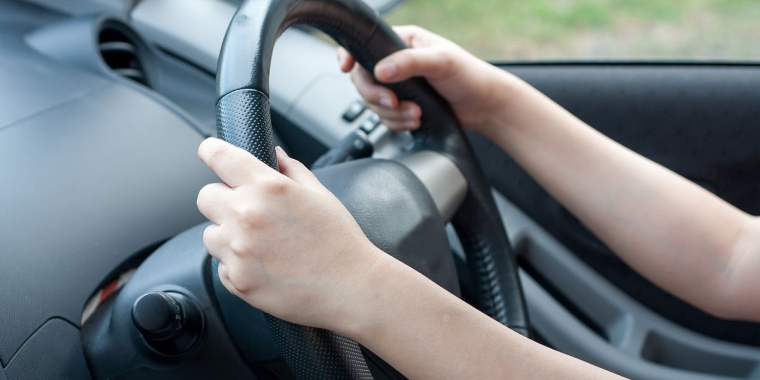
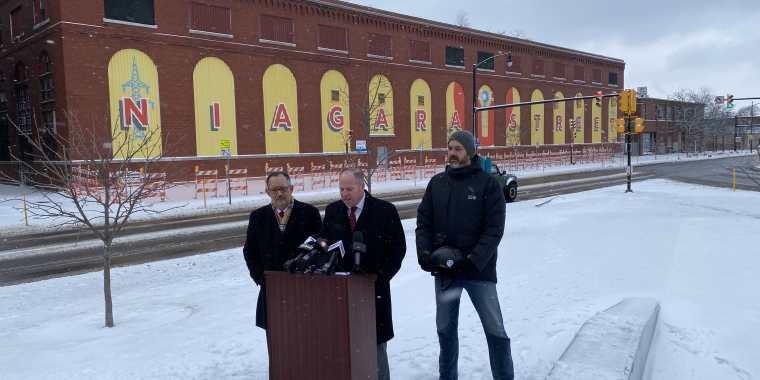
Senator Kennedy 2022 Woman of Distinction
August 26, 2022
